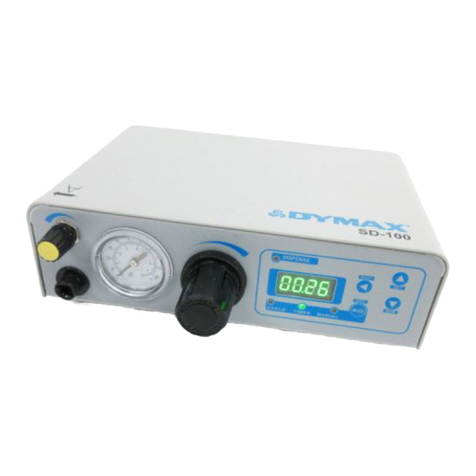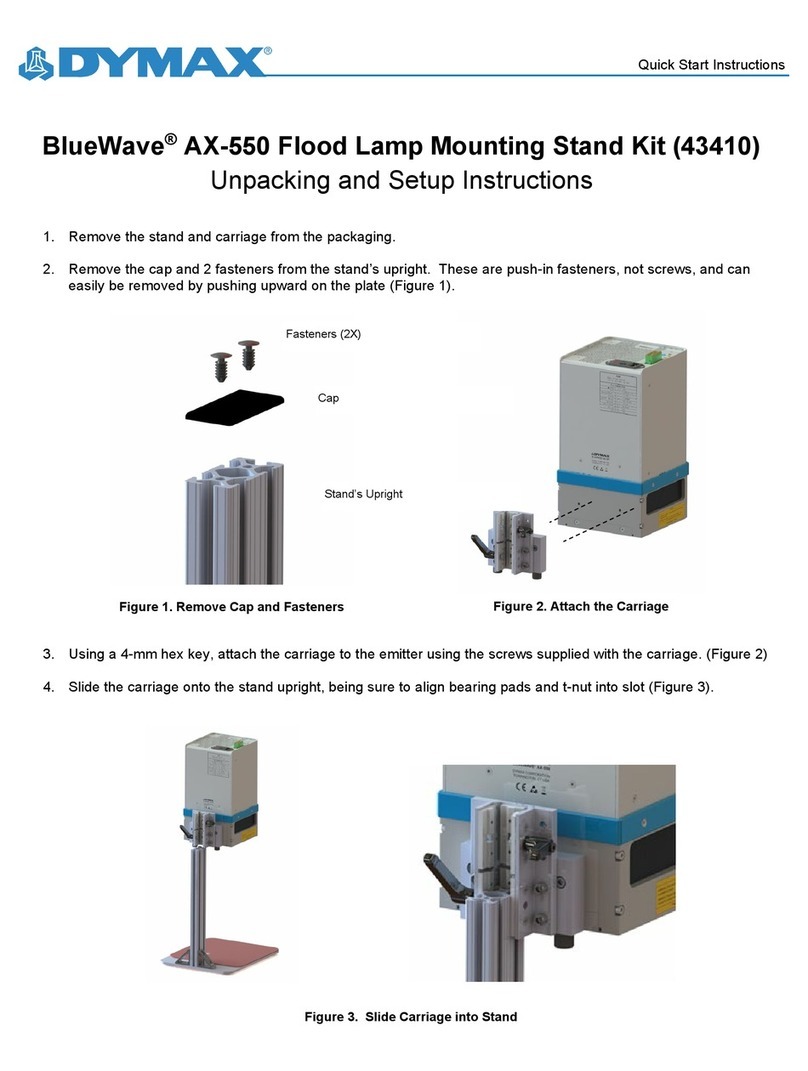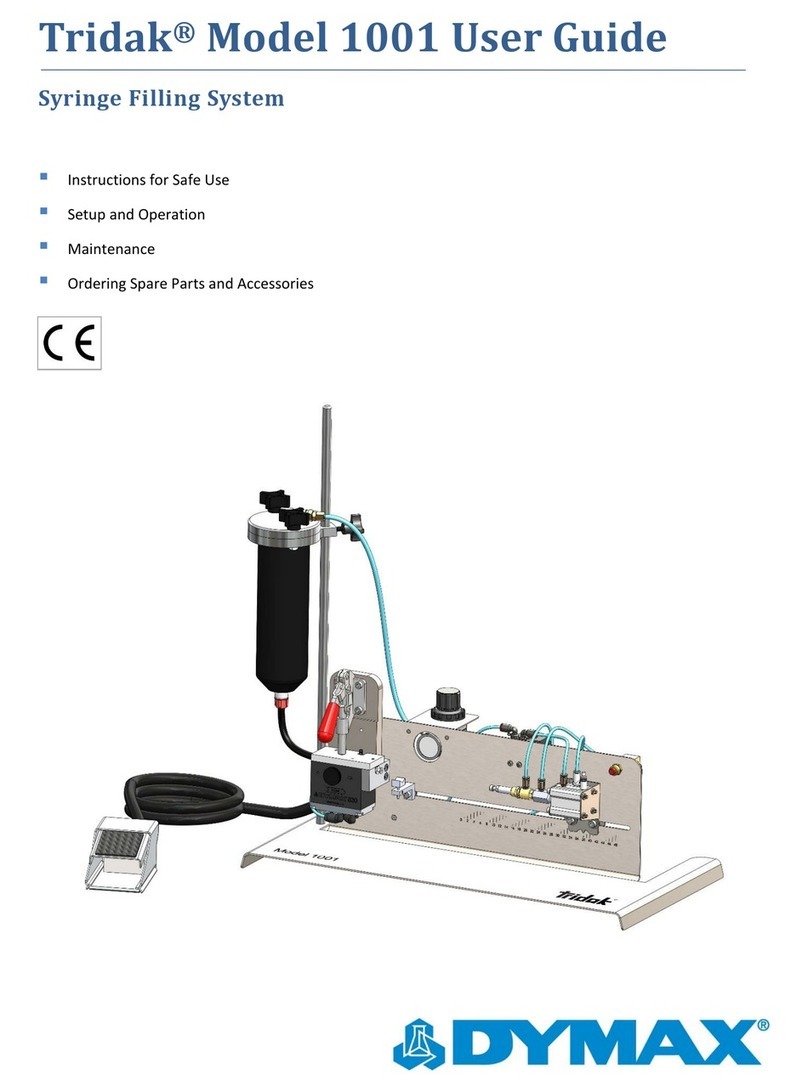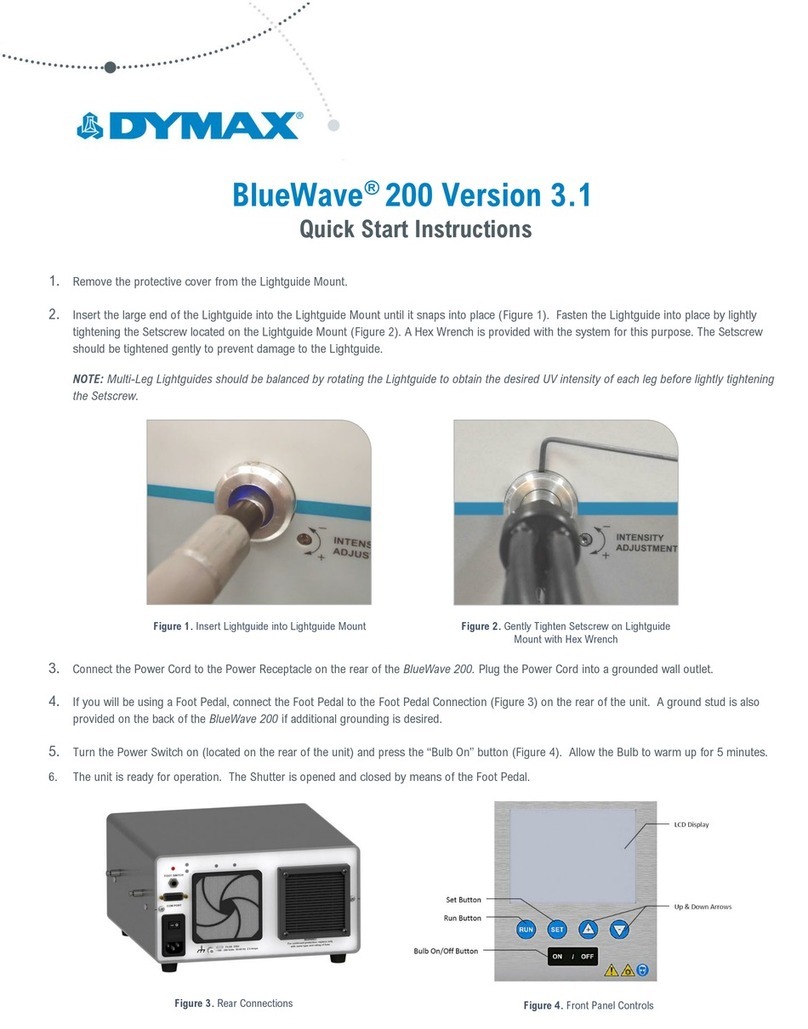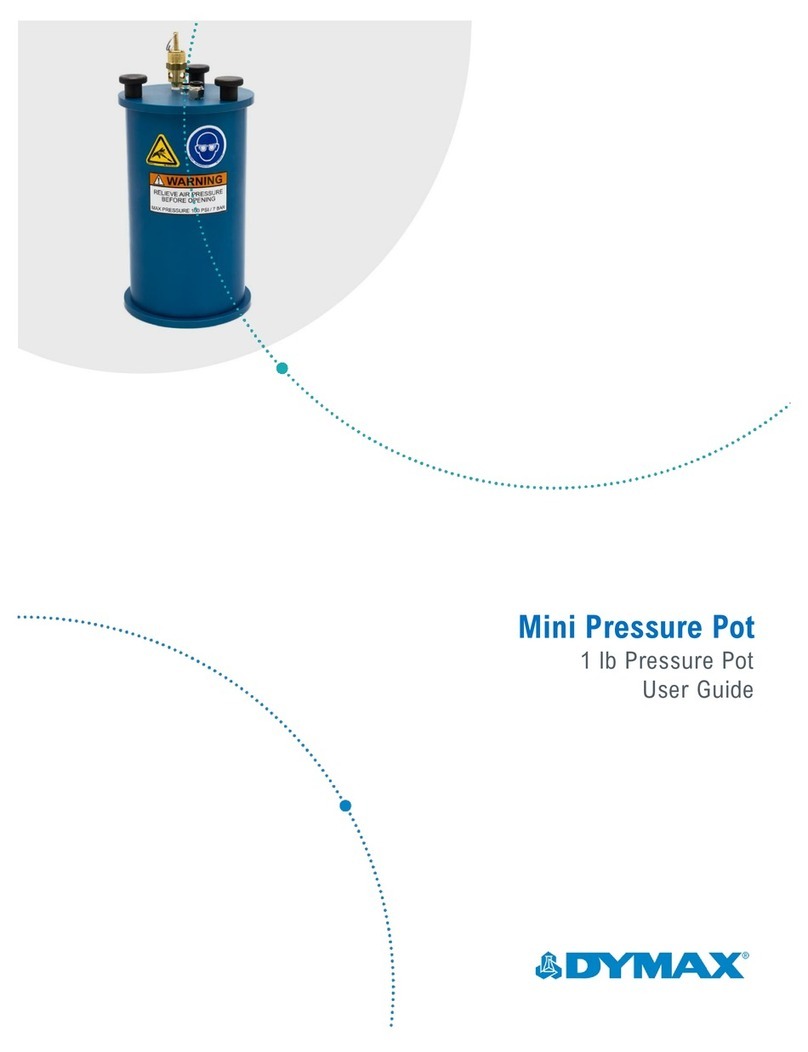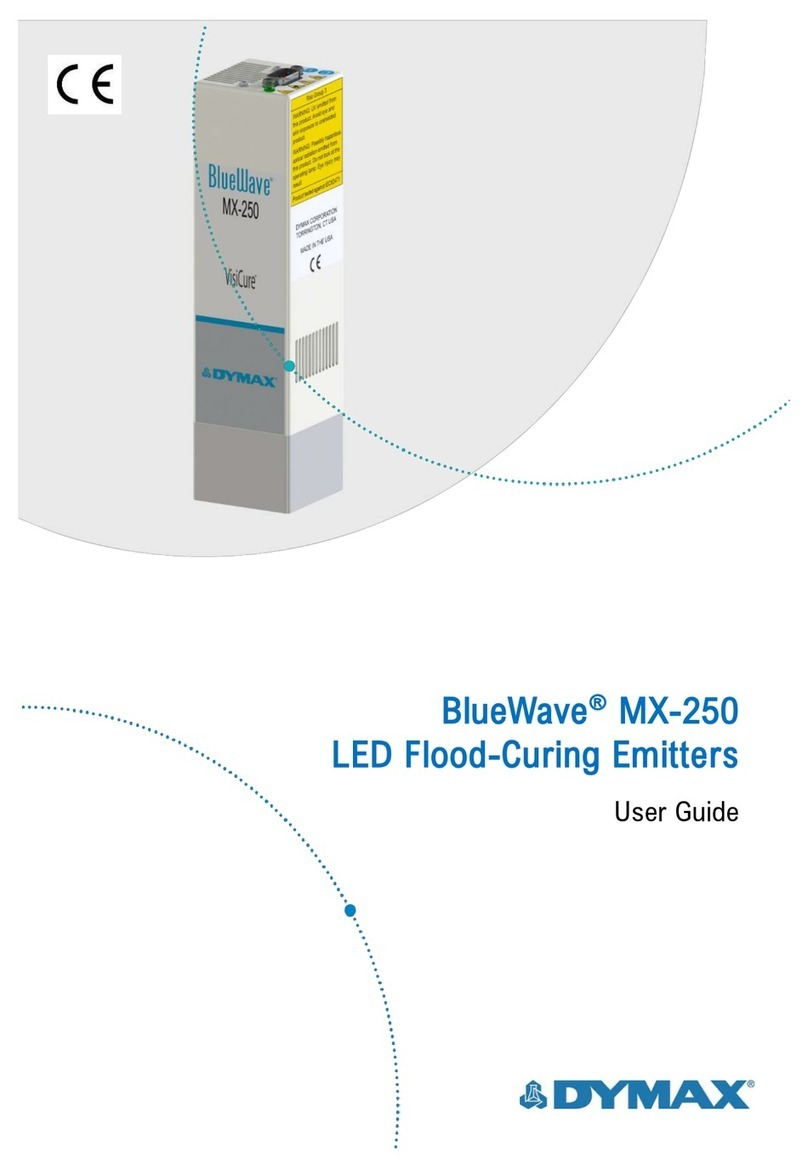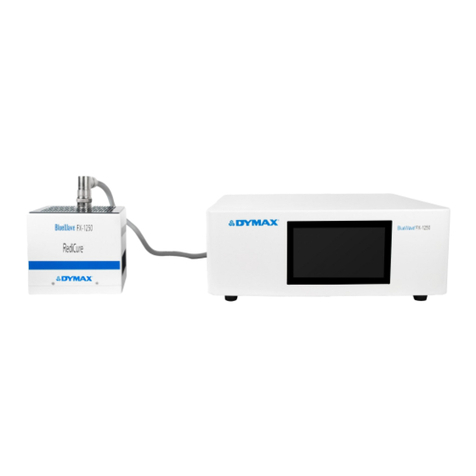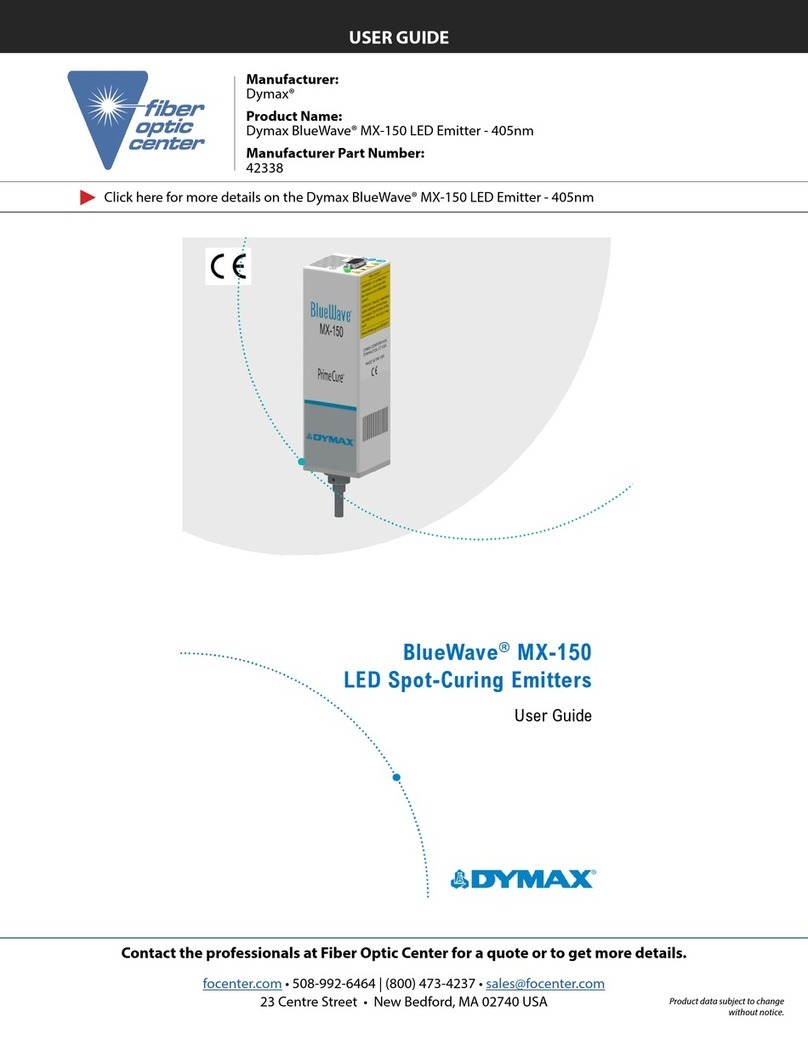
INSTALLATION AND SYSTEM INTERCONNECT
1. Connect the Power Cord to the Power Receptacle on the rear of
the unit and plug the Power Cord into a grounded wall outlet.
Figure 3. Cable Connection,
BlueWave 200 Rear Panel
Figure 4. Lightguide Mount
Protective Cover Installed (left);
Protective Cover Removed (right)
Figure 5. Insert Lightguide into
Lightguide Mount
Figure 6. Adjust the Intensity Adjustment
Screw
Footswitch
Connection
Power
Receptacle
Power Cord
2. Connect the Footswitch to the Footswitch Connection (Figure 3)
in the rear of the unit. A ground stud is provided on the back of
the unit if additional grounding is desired.
3. Remove the protective cover from the BlueWave®200’s
Lightguide Mount (Figure 4).
NOTE: Always have a Lightguide or the protective cap engaged
in the Lightguide Mount. UV light can escape when the Shutter is
activated.
4. Remove the protective end caps from the Lightguide. Visually
inspect the two ends of the Lightguide to verify that no foreign
material is present. The ends of a DYMAX liquid-filled Lightguide
can be cleaned with isopropyl alcohol as required to remove
foreign material and deposition from outgassing.
5. Insert the large end of the Lightguide into the Lightguide Mount
until it snaps into place (Figure 5).
6. If desired, the Lightguide may be fastened into place by lightly
tightening the securing setscrew installed in the Lightguide
Mount (Figure 6). A hex wrench is provided with the BlueWave
200 for this purpose. The setscrew should be tightened gently to
prevent damaging the Lightguide.
NOTE: Multi-leg Lightguides should be balanced by rotating the
Lightguide to obtain the desired UV intensity of each leg before
tightening the setscrew.
7. Turn the BlueWave 200's Power Switch on.
8. Allow the Bulb to warm up 4-5 minutes to obtain the maximum
light output.
CAUTION: This is an arc, not a filament Bulb. Once ignited, it
must be left on for a minimum of 10 minutes to fully vaporize
elements in the Bulb. If not, the Bulb may be difficult to re-ignite.
Each re-ignition increases the rate of Bulb degradation.
NOTE: The Bulb must cool before it can be re-ignited. Turn the
unit off and allow 5 to 10 minutes for it to cool down. If the Bulb
fails to ignite, refer to the Troubleshooting Section of this manual.
Bulb life is reduced each time the unit is switched on and off.
Avoid repeated cycles that shorten Bulb life by leaving unit on
through breaks.
9. Operate the Shutter by pressing the Footswitch. With the Shutter
Selector Switch in the manual position, the Shutter operates
directly from the Footswitch. In the timed position, the Shutter
opening is determined by the setting on the electronic Timer.
Simply push the Timer Setting Buttons to enter the desired
number of seconds the Shutter is to remain open.
10. With the Shutter open, adjust the Intensity Adjustment Screw as
required to achieve the desired output intensity (Figure 6).
10 DYMAX BlueWave®200 Version 1.1 UV Light-Curing Spot Lamp System
